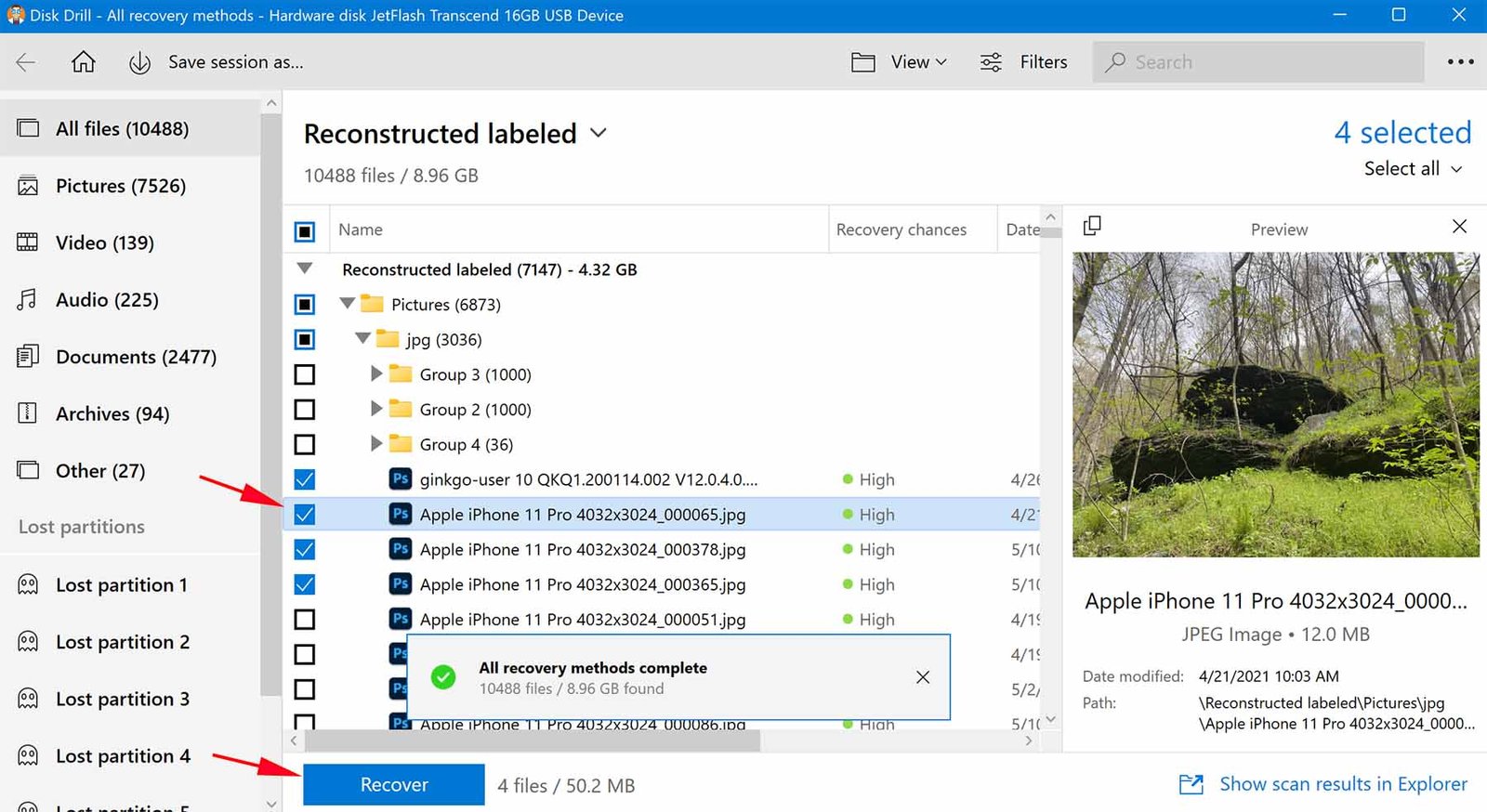Easy Steps to Recover Deleted Files Without Specialized Software
Easy Steps to Recover Deleted Files Without Specialized Software can be achieved through careful steps and understanding of your file system. Imagine the frustration of losing important documents, photos, or videos – a critical presentation, cherished memories, or crucial business data gone in an instant. This comprehensive guide provides a detailed blueprint for retrieving deleted files without the need for complex or costly data recovery software. It addresses common data loss scenarios and walks you through practical techniques to retrieve your valuable digital assets. This article will demonstrate multiple effective approaches, explaining how to leverage built-in tools, explore cloud storage, and implement smart data recovery strategies. We will dissect the strategies and provide concrete examples so you can confidently apply them to your situation.
Understanding the Scenario of Data Loss
Recognizing the Potential for Data Loss
Data loss, whether accidental or unforeseen, can be incredibly disruptive and stressful. It often involves the loss of critical information, precious memories, or vital documents, impacting personal or professional lives significantly. This section emphasizes the need for proactive measures to safeguard data and outlines the importance of adopting strategies for data recovery in the event of such incidents. Regular backups and awareness of potential dangers can help mitigate the impact of data loss. (e.g., hard drive failure, accidental deletion, system crashes, malware attacks). Understanding the different scenarios that can lead to lost files is the first step to finding effective recovery solutions. Consider hard drive failures, corrupted files, accidental deletions, or even natural disasters; each scenario demands a tailored approach to data recovery. The loss can range from insignificant files to irreplaceable data, making data recovery a critical aspect of digital life.
Categorizing Data Loss Incidents
Data loss can occur in various ways, each requiring a different recovery approach. Accidental deletions are commonplace, often happening when files are mistakenly emptied from folders or the recycle bin is cleared. A corrupted file system could arise from a power surge or improper shutdowns, rendering files inaccessible. Furthermore, external events such as hardware failures, natural disasters, or even malicious software attacks can result in significant data loss. Each category requires distinct strategies, demanding varying levels of technical expertise and resources.
Leveraging Built-in System Tools
Utilizing the Recycle Bin (Windows)
If you’ve recently deleted a file and immediately realized your error, chances are it’s still recoverable through the recycle bin. The Windows recycle bin temporarily stores deleted files, allowing for easy recovery within a specified period. Understanding the intricacies of the recycle bin’s functionality is crucial to maximizing its utility. If you mistakenly deleted a file from your desktop or from another directory, the recycle bin can be your friend. Locate the recycle bin icon on your desktop, and double-click to access the stored files. Select the files you wish to restore, and click ‘Restore’ to place them back into their original locations. You can also permanently delete items from the recycle bin when you are sure they are no longer needed. In addition to desktop access, you can access files in the recycle bin through the File Explorer or other file management tools.
Exploring Recovery Options in File Explorer
File Explorer provides additional functionalities for restoring recently deleted files. Often, it offers the ability to recover files that have not yet been permanently deleted. Specific methods may vary across different operating systems and software, but the core principle remains consistent: review and restore files in an appropriate manner. You may encounter options for recovering files that were recently deleted, deleted from the recycle bin, or even files affected by a system crash. This method provides another layer of recovery, increasing your chances of retrieving lost data. Note, however, that these options may not always be available depending on the exact circumstances of the file deletion.
Related Post : A Beginner’s Guide to Learning Python Programming
Exploring Cloud Storage Solutions
Leveraging Cloud-Based Backup Services
Cloud storage services have become a prevalent means of data backup, enabling easy access to files from multiple devices. Cloud services, like Dropbox, Google Drive, or OneDrive, offer automatic backup capabilities for many users. When you opt for these services, data is stored remotely, eliminating the risk of local hard drive failures or other local issues. A significant benefit is the ability to access backed-up files from various locations or devices. To recover deleted files from cloud storage, you must check if you have enabled automatic backup. If you’ve made manual backups, locate them in the cloud interface and restore them to their original locations, or download them as needed.
Restoring Files from Cloud History
Cloud platforms often maintain a history of file modifications. This feature often allows users to restore previous versions of files, even if the current version has been inadvertently deleted. Understanding how to access and utilize this file history is critical for data recovery. To access your file history, navigate to the file’s location in the cloud platform and check for the version history options. This function provides a valuable fallback in cases of data loss and highlights the advantages of using cloud-based storage and backup services.
Utilizing Third-Party File Recovery Tools (Optional)
Understanding the Limitations of Freeware Tools
In certain scenarios, the built-in tools and cloud solutions may not be sufficient for recovering deleted files. This is especially true in situations where files were deleted from a non-standard location, or data loss occurred under unusual circumstances. There are many third-party file recovery tools available. Free recovery tools are available for recovering deleted files, but there are inherent limitations to consider, such as the possibility of data loss, limitations in the data that can be recovered, or limitations in the file types that can be handled. Be cautious about the freeware tools offered online, as some might introduce security risks or not meet your specific file recovery needs. Always verify the reputation and credibility of any third-party tool to ensure it’s safe to use.
Comparing Different Software Options
Extensive research can lead to identifying appropriate and efficient recovery software tailored to different data loss situations. When choosing recovery software, carefully evaluate features, capabilities, and user reviews to make the best informed decision. Many specialized data recovery software packages are available, but often, these paid tools offer advanced features, larger capacities for recovered files, and extended support to ensure the best chances of success. When selecting a tool, consider factors such as price, the type of files it can recover, and whether it’s compatible with your operating system.
Additional Tips for Maintaining Data Integrity
Practicing Regular Backups
Regular backups are crucial for preventing data loss. The risk of data loss due to accidental deletion or system failure is reduced when data is backed up routinely. Automatic backups via cloud services, external drives, or other methods can be scheduled on a regular schedule, such as daily or weekly, for best results. Creating a backup routine can also provide peace of mind that if there is an incident, there are available files to restore.
Maintaining Proper File Management Practices
Employing systematic organization and proper file management practices helps avoid accidental deletion or data loss. Regular review of files, efficient file organization, and creating clear naming conventions for files can minimize risks. File organization and management systems will lead to easy access and reduced stress in managing files.
Case Studies of Data Recovery
Real-world Examples of Effective Data Recovery
Numerous case studies illustrate successful data recovery using various methods. These examples highlight how critical backups, efficient file management, and readily available recovery options can ensure the recovery of lost data. Data recovery scenarios can be diverse, from accidental deletion of project files to complex hard drive failures, showcasing the potential scope of recovery situations. In certain cases, cloud-based recovery services have played a significant role in retrieving lost data.
Statistics on Data Loss and Recovery
Importance of Data Security Measures
Data loss statistics highlight the critical importance of implementing proactive data security measures. Understanding the frequency of data loss incidents underscores the need for proactive data backup strategies and efficient file management to mitigate these risks. Data loss frequently occurs in various sectors, from personal use to enterprise settings, emphasizing the importance of backup protocols.
Understanding Different File Systems
Analysis of Specific File Systems
Different file systems have varying recovery approaches. Understanding these distinctions is essential in the event of data loss. File system recovery strategies can vary. Familiarize yourself with the specific file system used for your files to determine the most effective recovery approach.
Summary of the Best Strategies
Key Principles of Data Recovery
This guide provides several techniques for recovering deleted files without specialized software. A combination of strategies, like checking the recycle bin, using file explorer features, and exploring cloud storage services, provides the best approach. The success of file recovery depends on understanding how files are stored and the specific tools available. Combine these strategies to maximize your chances of successfully retrieving lost data.
In conclusion, recovering deleted files without specialized software is achievable with careful steps and understanding of your file system. By utilizing built-in tools, checking recycle bins, and exploring cloud services, you can effectively regain access to lost data. This article has provided practical steps, addressing common issues, and showcasing alternative approaches to file restoration. If you’ve encountered difficulties, remember to consult expert help or professional data recovery services for complex scenarios. Don’t hesitate to try the methods outlined here and empower yourself with the knowledge to recover lost files without expensive software solutions. Continue your data recovery journey today!
Share this content:














Post Comment